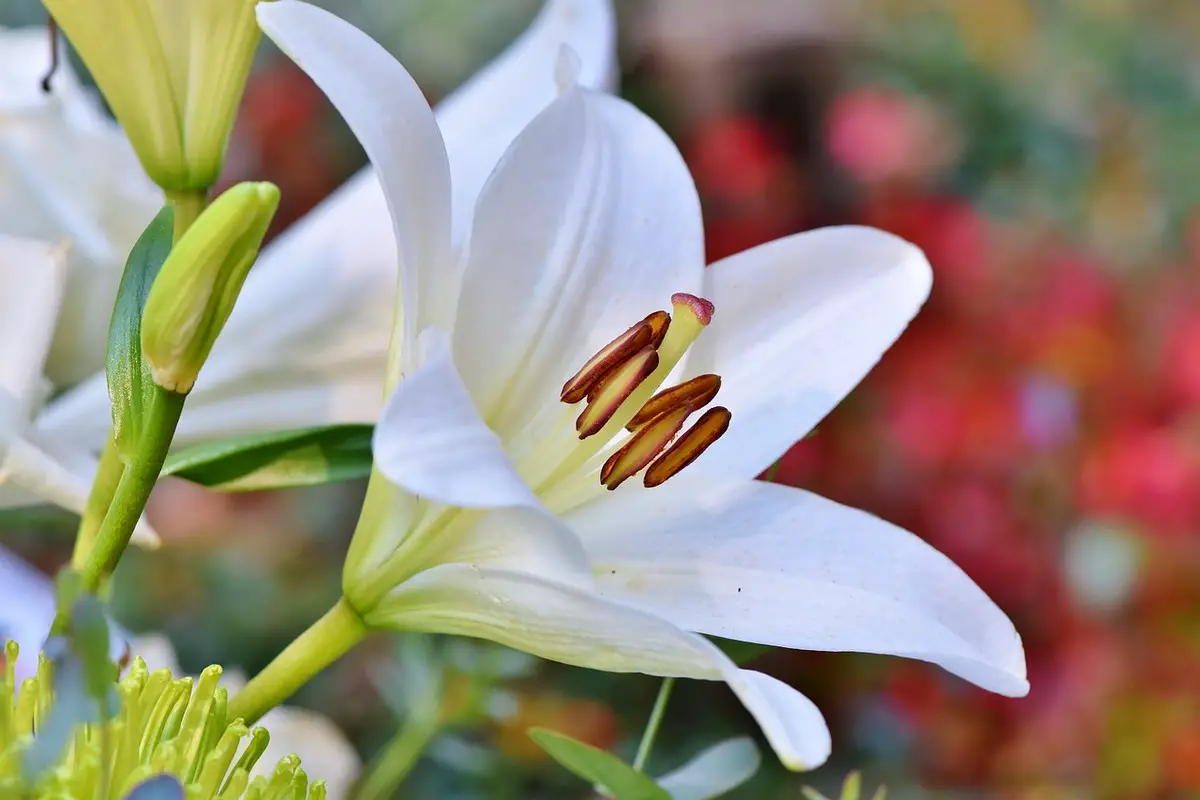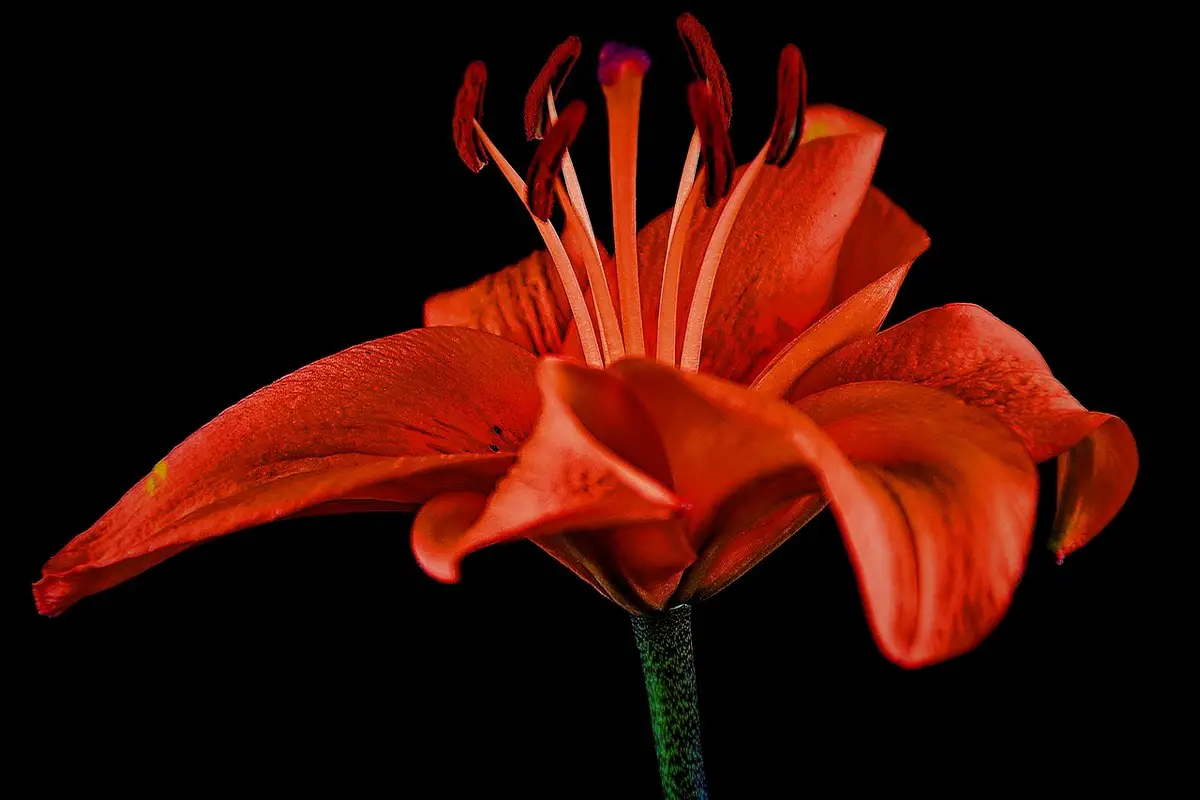When to plant lilly bulbs for vibrancy in your garden guide, Home landscape tips, Flower planting advice
When to Plant Lilly Bulbs for Vibrancy
4 December 2023
The Perfect Schedule for Garden Glory: When to Plant Lilly Bulbs for Vibrancy
Lilies, with their enchanting trumpet-shaped blooms and elegant foliage, can be the crowning glory of any garden. These captivating flowers can fill your outdoor space with vibrant colours and delightful fragrances. But to achieve a successful lily display, it’s crucial to know when to plant lily bulbs and ensure they are planted under the right conditions.
With proper planning, you can enjoy a showstopping lily garden or garden in the home that enthralls the senses and adds visual interest to your landscape. Let’s explore the steps to ensure your lilies thrive, from optimal planting times to soil preparation and care techniques, focusing on when to plant lilly bulbs for the best results.
Key Takeaways
- Plant lily bulbs at the right time for desired blooms – early spring for late bloomers and fall for spring showers
- Select a location with dappled sunlight, rich soil, moist conditions & slightly acidic pH of 6.0 to 7.0
- Follow best practices in planting depth, spacing & care post planting. Be aware of common pests/diseases and protect container plants during winter
Optimal Timing for Planting Lily Bulbs
Understanding the right time to plant your lily bulbs can lead to a spectacular bloom. The timing depends on the lily variety and your desired flowering period.
There are two main planting seasons: early spring for late bloomers and fall for those that prefer spring showers.
Spring Planting for Late Bloomers
Late-blooming lily varieties, such as:
- Star Gazer
- Trumpet lilies, known for their trumpet shaped flowers
- Oriental lilies
- Asiatic hybrids, also known as asiatic lilies
- Martagon lilies
These captivating flowers should be planted in early spring in your flower bed. They will grace your garden with their presence from mid to late summer, creating a dazzling show of colors and fragrances.
For vibrant growth and plentiful blooms, provide your late-blooming lilies with bone meal or a similar fertilizer during their growth period. Also, be sure to water them regularly, supplying at least half an inch of water each week.
Fall Planting for Spring Showers
For an enchanting spring display, plant early-flowering lily plants, such as Fragrant Oriental Lily and Tango Netty’s Pride Asiatic Lily, in fall. Fall planting allows the bulbs to establish roots before the ground freezes, ensuring a strong start for your plants and the beauty of fall planted bulbs.
When planting these autumn beauties, move any additional mulch aside and prepare the planting beds with a generous layer of mulch. This will keep the soil warm and well-draining, setting the stage for a breathtaking display of blooms come springtime.
Selecting the Right Spot in Your Garden
Selecting an ideal location for your lilies can significantly contribute to their growth. Most lilies enjoy dappled sunlight, with their roots in the shade and their blooms basking in the sun. This balance ensures healthy growth and vibrant flowers.
The soil should be rich, moist, and well-draining, as lilies are sensitive to waterlogged conditions. A slightly acidic to neutral pH of 6.0 to 7.0 is ideal for most lily varieties. By selecting a spot with these conditions, your lilies will have the best chance to thrive and reward you with a captivating display.
Preparing Your Soil for Lily Bulb Planting
Before planting your lily bulbs, preparing the soil for maximal growth is necessary. Start by incorporating organic matter, such as compost, well-rotted manure, or aged manure, to enrich the soil and improve its drainage. This step will provide your lilies with the nutrients they need and prevent waterlogging, which can lead to root rot.
If your soil is heavy or compacted, consider adding sand or grit to create a more porous environment. This will allow water to flow through more easily and prevent your lily bulbs from sitting in water, reducing the risk of rot or fungal diseases.
The Art of Planting Lily Bulbs
Once the suitable location and soil are ready, you can plant lily bulbs. This process involves digging holes at the appropriate depth and spacing, positioning the bulbs with the pointed end facing up and roots facing down.
Digging to the Right Depth
The ideal planting depth for lily bulbs is three times the height of the bulb. This provides the bulbs with enough room to grow and develop strong roots. However, there is an exception to this rule: Madonna lilies prefer shallow planting, with only an inch of soil covering them.
Keep in mind that soil type can influence planting depth. Ensure your planting hole is deep enough to accommodate the bulb and provide proper drainage. This will create the optimal environment for your lily bulbs to flourish.
Spacing for Success
Proper spacing between lily bulbs during planting is important to promote healthy growth and avoid congestion. Here are some guidelines to follow:
- Small bulbs should be spaced several inches apart.
- Large bulbs should be placed approximately one-and-a-half feet apart.
- Taller lily varieties may require staking to support their stems and prevent them from flopping over.
Providing appropriate spacing and support for your lily bulbs can lead to an eye-catching garden display, highlighting each bloom and the surrounding lily foliage.
Caring for Your Lilies After Planting
Planting your lilies is just the first step; their care continues thereafter. To ensure a thriving display of blooms, provide regular watering throughout the growing season. Lilies, especially those grown in pots, require generous watering to keep their soil moist.
Besides watering, here are some tips to nourish your lilies:
- Use a liquid potash feed bi-weekly during their growth phase.
- Top dress with a slow-release fertilizer to provide essential nutrients.
- Stake tall lily varieties to support their growth.
- Deadhead spent blooms to encourage new flowers and maintain a tidy appearance.
Navigating Common Lily Pests and Problems
Even with diligent care, lilies can occasionally succumb to pests and diseases. Common lily pests include:
- Red lily beetles
- Aphids
- Slugs
- Snails
Fungal diseases can cause brown spots on leaves or even plant death.
To combat these issues, follow these steps:
- Inspect your lilies regularly for signs of pests and remove them promptly.
- In cases of severe infestations, an appropriate insecticide may be necessary.
- For fungal diseases, ensure proper air circulation around your plants and avoid overwatering to reduce the risk of infection.
Growing Lilies in Containers
Cultivating lilies in containers offers a convenient way to appreciate their charm in limited spaces or patios. To successfully grow lilies in containers, plant lilies by placing the bulbs in pots with good drainage and use a lightweight potting mix. Check out prickleplants.co.uk
During the winter months, protect your container-grown lilies by moving them to a sheltered location or covering the pot to keep the rain off. This will help ensure your lilies survive the colder season and return with a dazzling display of blooms come spring.
Companion Planting with Lilies
Planting lilies alongside compatible plants can result in an aesthetically appealing and robust garden. By growing lilies alongside compatible plants like:
- Ornamental grasses
- Roses
- Salvias
- Geraniums
- Wildflowers
You can achieve a diverse and harmonious landscape.
Not only do companion plants add texture and contrast to your garden, but they can also attract beneficial insects, such as ladybugs and bees, to aid in pollination. With companion planting, your lily garden will be both beautiful and beneficial to the surrounding ecosystem.
Home Flower Planting Summary
In conclusion, planting and growing lilies can be a rewarding endeavor for any gardener. By following the guidelines provided in this blog post, such as selecting the right planting time, location, and soil preparation, you can create a stunning lily display that captivates the senses.
With a little care, attention, and love, your lily garden will flourish, bringing joy and enchantment to your outdoor space for years to come.
Frequently Asked Questions
What month do you plant lily bulbs UK?
Lily bulbs should be planted in early autumn, from October to early April, making sure to avoid frosts and hard ground. They can also be planted later in the season up until the end of March. Ensure your bulbs are well watered after planting.
How many lily bulbs should I plant together?
For best results, plant lily bulbs in clumps of three to five, at least 15cm apart and three times the depth of the bulb height. Bulbs should be placed in deep containers with at least 5cm between them.
Do lilies grow better in pots or ground?
Lilies can be successfully grown in pots and containers, allowing for maximum effect in the garden. Dwarf varieties are a great choice for container gardening, as they are more suited to a limited space. Moving the pots around also helps keep them from becoming too prolific.
Will lily bulbs bloom first year?
Lilies typically bloom in the summer or fall, but sometimes may not bloom during their first year of planting. It’s possible that they will wait until the following blooming season to show off their vibrant hues.
What is the ideal planting depth for lily bulbs?
For most lily bulbs, the ideal planting depth is three times the bulb’s height, while Madonna lilies need only one inch of soil above them.
Comments on this guide to When to plant lilly bulbs for vibrancy in your garden article are welcome.
Plants
Garden Plants
Planting perennials in your garden benefits
Trends in Plant Design and Architecture
Water garden and landscape with aquatic plants
How to Take Care of Your Growing Plants in the Garden
5 best aquatic plants that can help reduce algae
Environmentally friendly artificial plants
Plants and green spaces benefit your building
Homes
Residential Architecture Articles
Comments / photos for the When to plant lilly bulbs for vibrancy advice page welcome








